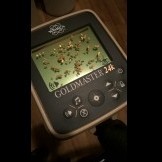Leaderboard
Popular Content
Showing content with the highest reputation on 02/21/2021 in all areas
-
Went out today for another session,long walk and lots of digging .Not sure how many miles i did but a few nice weather again,with the nox and a spade ,lots of WW2 remains,and .......1 9ct Gold ring with 3 semi precious stones .Bullets registered 14/15/16 Bullet case around 20/ Fishing weight High 20s Gold ring 6/8 100% of the bullets tip were identified...... Was running at Reac 2 ,pinpointing at 4,signal are longer but thats fine with me Enjoy RR15 points
-
I made it out to Gold Basin for a couple days of hunting until a high wind advisory chased me out on Saturday with a wind gust forecast of it hitting 50mph in the Arizona desert on high ground. The wind started to pick up around 7pm by morning it was buffeting the trailer pretty good. I picked up camp and found a spot protected enough from the wind I could unlatch and drop the top on my a-frame without a strong gust hitting at the wrong time ripping off the roof. Luckily all went without incident and the drive home was uneventful. the couple pieces I picked up were found on a low bench above the wash at the beginning of the transition from the hillside the larger specimen 19.8g total (tested around 1.5g gold) down about 8” gave a soft deeper mellow high-low, the small piece at .3g with a bit of quartz attached a similar signal down a few inches. the little meteorite also in the same area and down a few inches hit really hard on the GPZ, a small window shows a high concentration of Iron nickel specks.10 points
-
Norvic asked why I was so proud of a VLF when I own and have posted much success with the other higher end detectors. It was my post on rating the higher end Minelabs....so here goes. There are many factors to my craze and style of detecting, but my finds are the facts and not many people can compare, unless they too use the tools (detector) and hunt the style I do. I consider myself a gold hawg or gold pig. I chase it all in terrains flat or tall. Terrain - I live in the Northwestern state of Idaho and much of my detecting in the surround state of ID., is Oregon, Nevada and occasional Montana. For the most part, OR, MT and ID are pretty much the same with steep terrain mountainous rough country. A day of electronic prosecting and hiking in such states, is much harder on the body for a guy my age, heck it’s harder for anyone. Going to Arizona, Rye Patch and other Northern Nevada high desert areas is a treat for my body in more ways than one. Maybe that is why so many people detect there? It’s easy to drive and get to without walking…boy are most of us lazy? YES, including me at times, but not in my home state (backyard where I play). The ID, OR, MT mountains have steep ravines/canyons and the water is at the lowest point. Here is the many miles of hand placer workings, dredge tailing and hardrock mining ore dump piles. The gold I am chasing is the stuff the old timers missed. Pic below - This huge ore dump pile produced a few thousand dollars in Specimens. This is the not so steep side and we had to tie off with ropes on the other side. Half the targets would roll down the hill and need to be found during a break when we were at the bottom. The PI's can't see this time of gold. Trash - Trash is my treasure in a way.. as I know the site has not been hunted as hard. Trash is what most detectorists hate, and I too get that way on occasion, but I know if I'm patient, I'll eventually be rewarded. A big factor I run into is 100 to 150 yr old man made trash from the early prospectors. They left much of it on the hill, in the placer digs and tailing piles. Many of the small mining camps were right on or near their diggings and they just tossed the old food cans, tobacco/coffee tins and worn out leather boots with hundreds of nails and broken, picks/ax heads shovels aside. Pic below- In old tailing piles a lighter, faster, better ID detector is best. He who digs the most non ferrous targets in a day, get to smile all the way home. Pic below- is the 1 pound specimen after cleanup. Tools – Know your detector, its limitations, strong and weak points. Bigger deeper detector is great in flat terrain and areas with limited trash. Raw depth and power is amazing to have, when the target you dig a foot or so deep is not a sardine can. How about a shovel head at 2 feet or more? Think about it and what you do when digging 5 or 6 of those an hour with your big deep penetrating detector. What does your body have left in the tank? My lighter VLF is easier to swing in rough terrain, has better Iron and Target ID, is not as deep or powerful in trashy sites. It saves me time from digging unknown iron targets, it saves me energy from digging deep holes, it saves me energy from having to pack around a bigger bulky detector. The proper detector for the site is a must and in many cases my lighter, faster, better target Identification, sub $1000 investment is the right tool. Pic below - This golden oreo was recovered in old hand placer workings with my VLF. Having what I consider the best identification VLF gold detector on the market saves me time. Pic below - It was recovered at 16" with Minelab EQ-15" coil. Yes I'll be going back over this area with the new CoilTek NOX 15" round as it is even deeper. Gold Knowledge- This is confusing to so many people as they think gold is gold. Yes I too used to think the same way. Luckily I hunt a variety of gold producing locations and sites I like to detect and learn from. My many years of comparing/testing detectors at such sites has given my staff and I an understanding of gold, its characters, density and how the elusive Au responds to the varying detector models from the different manufactures. Many of the nugget photos being shared on social media in years past were dense solid gold pieces and they are beauties. That’s what the detector could easily respond to. In more recent years, the sizes of the nuggets became smaller and we started reading about and seeing some nice specimens. The newer GPX detectors with their advanced tuning and soil timings (Fine Gold) would outperform their older brothers (SD/GP’s) on smaller and courser gold, so when get to make more of those finds and share them. Most recent years has us using SDC-2300 and GPZ-7000’s. Again, the gold gets smaller and the amount of crystalline gold, wire gold, salt/pepper specimens are being unearthed with these detectors supersedes that of their older brothers the GPX series. Pic below - This softball sized specimen was found with a VLF and has multi ounces of gold. VLF picks it up deeper than many bigger detectors. Pic below - This beautiful 3" long quartz and gold specimen came from a trashy ore dump pile with a VLF. Pic blow- These quartz cocoon wire gold specimens bring a premium and come out of hard rock ore dump piles. Pic Below - The PI's don't see these rare pieces, the 7000 barley does on a select few. Pic below - I have a feeling the extra sensitivity of the new GPX-6000 will do even better. Proof – The facts are in the vault at the bank. I own beautiful specimens pieces recovered with detectors and have tested many on a variety of detectors. I have gold finds that are multi ounce pieces and they contain 2 or 3 ounces of gold in them, but for some reason an SD or GP don’t see them, even less than an inch. I also have such pieces my GPX 5000 does not see, but my GPZ-7000 does. What is most amazing, is I have pieces of gold with multi ounces of metal and even the ZED has issues or can barely respond an inch or two away. If this is the case, then why do I have these find gold pieces of art? I’ve taken the time to test and learn my detector tools and have found a certain trusty VLF sees them all, can ID them all, is lighter in weight and so I get to hunt longer, saves me energy since I don’t dig as deep for unwanted targets. Pic below - This specimen came from dredge tailing and the speckled pieces like this get missed by most PI's. Pic below- Over $800 in gold in this 3 ounce specimen and my VLF does better than my GPX-5000 and my SDC-2300. The SDC goes deeper than the GPX. You better know your gold and your detectors capabilities or lack of. Pic below - This 3 ounce specimen was found in trashy hand workings. I actually had a GPZ-7000 here for a couple hours and gave up because of the amount of item trash. A GPX-5000 with DD coil run with DISC mode would be better than my GPZ, but then again my NOX does even better. Better target identification of my NOX, is most important at the site this 3+ oz'er came from. GPX-6000 – A new tool and one that has Gerry very very excited. Now we are about to get a revolution of Geo Sensing Technology with PI power and capabilities for a wider variety of gold textures, densities, characters and sizes. Minelab (and their track record) is even telling us some of such capabilities and so I and a few of the guys who do not like to miss gold, are getting ourselves prepared, getting our old sites, lined up and making sure we are going to take advantage of the stragglers. Remember when the SDC-2300 and GPZ-7000 came out and all the slow response from the majority. You folks missed the opportunity of a lot of gold. My guys and I were killing it in NV and AZ on those so called worked out sites. Was it a gamble to spend that kind of money? If that’s what you love/enjoy and if you have a good track record with Minelab, it’s bet I’ll take most every time. I don’t lose detector bets very often. Pic below- This stunning collectible specimen was found by my brother with his SDC-2300. It came from a place he had previous hunted and found gold with his GPX-5000. The 5000 does not even whisper on it. Minelab claims the GPX-6000 is more sensitive than the SDC-2300 & GPZ-7000. I can't wait to use the GPX-6000 at the site and many others. Hopefully this story and the pics I shared will help educate some of you on how the different detector technologies produce more gold. I realize it's hard to put down your old reliable detector as it has probably and hopefully served you well. If your sites are getting thin of targets and or gold, just maybe a new detector can put the smile back on your face? I'll go back to this simple statement I have said below in other posts and it is the absolute truth. You can't find what your detector don't see. PS - I’ll be honest though, for me it’s the lighter weight, better ergonomics, not being tethered in a harness and User Friendly that has me sold. The extra gold my new GPX-6000 is going to find, is a bonus. PPS – I’m just as eager to test the GPX-6000 with some of my gold and see how much better/worse it does than my GPX, SDC and GPZ. (I'm educating myself). PPPS – I still feel there will be a place for my VLF, as it’s lighter, and have better target ID. See you in the gold field, where the most knowledge is learned. Or speed it up with our 3 days Field Training at www.gerrysdetectors.com Happy Hunting. Gerry7 points
-
Hello to all ,went to a secluded beach today,just to make sure i knew how to detect again it wasnt warm but sunny,and my fishing jacket kept me nice and toasty.As i got the luxury to have 3 times more digging tools than arms,i choose a spade for a change over a scoop.A cheap spade i bought on a road trip a while back when my old one broke and i just fitted a new shaft which i oiled with linseed oil 3 times.Anyway a lot of walking and gridding,the nox is my to go machine when i am back after a while especially with those long lockdown period. Lots of coast fight remains as you can tell fro the pictures a nice brass cross alas.......and a 1919 coin were the oldest find. Funny enough the cross bare the name of Saint Anthony of Padua ,which is the saint to pray to when something is lost......................well i found it. Will try to go out tomorrow,to see if i can find more bullets Enjoy RR7 points
-
I can get pretty detailed in some of my interests and views, but when it comes to detecting sites -- just the opposite. You've gotten some honest and deep felt advice regarding when and where to hunt. However in my experience there are a few simple 'rules' that have worked for me: 1) If it's private property, get permission or don't hunt it. If you're not sure, assume it's private. 2) If it's municipally owned public property, check websites and if detecting and/or digging are not explicitly prohibited, it's open season. Oh, and when you get there look at the posted rules and regulations (if they even have them). 3) If it's state or federal land, again check the web and conform to their rules. Detecting is kind of like buying on Ebay or walking in Manhattan. The rare bad experiences get all the publicity and press. Only once was I asked -- by school security guards -- to stop detecting (that was in greater Denver), and they were very polite and non-aggressive. Twice I've had private citizens initially show alarm. Staying calm, polite, and confident (but not defensive) defused both of those and I continued unopposed. I've been seen by municipal workers on innumerable occasions without anyone of them ever saying a peep. I've seen policeman on multiple occasions and even had one strike up a conversation. On my favorite park site my best source of information (by far) has been the park's custodian. I would never say my experiences apply to everyone, but if you do your homework (i.e. web check) you can be confident in your actions and likely at worst just be asked to stop. But for sure, refill your holes with care. When people see you respecting the property they will respect you.6 points
-
Got 2 more Phoenix buttons yesterday. Brian ("cal cobra") and I got out to one of our "backpocket sites" . This site has given up reales, early seateds, and 2 gold coins over the years. It is now super pounded and stingy. But we went to ply our luck yet again , looking for more stragglers 🙂 Here's a small #30, and a large # 27. Also a pix of the other age indicators I got. Eg.: Green blacksmithed copper slag, etc... Hopefully Brian will chime in with his finds. How many phoenix buttons did you get Brian ? 🤔 🤣 We love finding these. They've sort of become a "sport unto themselves", and value has become secondary these days (it's SO niche, that not many ever get bought and sold these days). Here's info. about these buttons for anyone who's curious.: https://en.wikipedia.org/wiki/Phoenix_buttons https://www.jstor.org/stable/25616604?seq=15 points
-
On ya Gerry, so different our ways to get that weight, with your permission maybe we should call our styles "evolution style", you and as Jeff has shown have evolved to hunt in the environment you have in your respective backyards. My backyard is similar in terrain but I have learnt to hunt for virgin patches well away from old mining in country no wheeled vehicle can traverse, shanks's pony is the only transport. My backyard has some spread out reef/lode mining and very little alluvial, patches are usually on slopes very few in creeks or gullies although sometimes the initial pieces that lead to those slopes are found in the creeks and sometimes by "electronic" loaming likely slopes. It is years in between times I run across other prospectors out there, most are as you say too lazy and only venture as far as wheeled transport will take them. That 6000 might be the detector that encroaches into our evolution style of mining. Many thanks for your detailed post, may many more illustrate their style in your thread.5 points
-
I got out 3 times and was able to snag some decent targets. This hunt was done at the rocky beach I frequent during winter. There were lots of targets, more than I could dig in one hunt. I got about $8 in clad. The first row is all the good jewelry, one small 14k (.73g), and the rest Silver. The second row of rings are all junkers. This second hunt netted about $12 in clad and a small/light broken 14k pendant. The last hunt wasn’t all that great but I somehow managed to get a gold tooth that weighs 3.6g. Thanks for stopping by and Happy Hunting.4 points
-
I opened up my TDIBH the other day for some fiddling around and checking out a few things. I powered up the detector with all of the guts and board opened up and had it hooked up to the 14.8v (4 x 18650 cells) battery pack. I had it going for just a few minutes when I gripped the circuit board as part of my “fiddling” around......well I dropped the board and swore a bit in response the burn I was expecting on my fingers. Well it turns out that on the opposite side of the board behind where the big capacitors sit is some sort of heat sink and I can tell you the heat from this spot was something else. The detector has and runs just perfect but the hotspot really surprised me. I decided to hook up the 12v battery pack and let it run for a decent amount of time and it never got past a mild warm on the back of the board. That extra couple of volts is generating some serious extra heat.....bit like on the heat sink area of the CPU chip in your computer. I honestly don’t know if the detector can handle this extra heat long term but I’m not taking any chances. I’ve moved back to the 3 x 18650 battery pack which I knocked up when I first got the detector. There is a slight loss in depth but surprisingly not too much. I feel the performance of the 11.1v Lithium setup is maybe 1 to 2 inches behind the 14.8v “hot pack”. You can see in the photos the big caps on the detector and where the heat comes from. The other photo is my 11.1v pack which packs some punch and lasts much longer then the stock NiMH pack.4 points
-
Hey guys, Can someone explain to me in simple terms what is it and what we accomplish by using a slight ground balance offset (either positive or negative) on our machines? I remember for example that when using an Xp Deus in the past, whenever I needed some little extra depth boost I was manually set the GB a little lower than the actual ground phase of my area but in the expense of greater ground noise and instability...the opposite when I needed a more quiet run....However I never deep dived into this concept and never understood how and why this really worked. Would be great to understand this now, and in order to help me (and because each machine has a different GB scale), let's assume a Ground Balance scale of a Makro Multi Kruzer (which I'm expecting soon). So...In a Makro M. Kruzer, let's say that machine grabs (via pumping) a Ground Phase of 70 in our area... 1) What if I manually set my GB slightly HIGHER than 70 (eg at 75) regarding ground noise, depth abilities and targets detection? Will the effects be the same for both low & high conductors or tiny & large targets? 2) Same as above, what if I manually set my GB slightly LOWER than 70 (eg at 65) regarding ground noise, depth abilities and targets detection? Will the effects be the same for both low & high conductors or tiny & large targets? 3) Will this GB offset apply also in the salt water the same way? (I recently whatched a guy reviewing and using a Multi kruzer in the salt water, and he manually increased his GB value on purpose while he was trying to detect a small gold chain underwater...never understood why he did such a thing and how this works) 4) Lastly, please define which side is "positive GB offset" and which side is "negative GB offset" in Makro machines..... May sound obvious but, in some machines higher GB Phase means hotter ground but in some other machines higher GB Phase means milder ground (the opposite). So to tell me that "a Positive offset means moving the GB value to the hotter side of scale & the effects wil be that..." may mean nothing if I don't know which side is hot and which side is mild...hope that makes sense. I don't have a clue which side is hot & which is mild in Makro GB Scales so would be nice to enlighten me and correlate your answers with this! Hope my questions makes sense... Regards, Argyris4 points
-
Some areas the tailing do get pushed around and can be detected again. The same thing happens in NV and AZ in areas without tailing, as they are clearing away the layer of ground already detected and then hunting the new layer, then push..detect, then push detect. Yes I have found plenty of gold with an X-Terra 70 and the newer model 705 (be sure to use the 18.75 kHz coils). If I forgot my NOX-800 and someone said what is the next best detector for the same tailing piles. I'd use the Gold Monster 1000 (newer version), X-705, White's 24K, White's MXT, Garrett AT Gold, and lastly the Gold Bug-2. The Vanquish has no Prospecting Mode, No adjustable Ground Balance. Heck I might even use an Equinox 600 before I used a Vanquish. Not beating on the Vanquish, but I have other detectors I know can do the task. Can any detector find a big nugget? Most certainly and we have found them with Coin Machines just to prove a point and win a steak dinner. But, it would not be a detector I would sell or recommend to those that want to chase gold..4 points
-
I have covered maybe 1/10 of the area. I am using the stock 11, I am using Park 1 , iron on, iron volume set at 1, 50 tones, 6 recovery, 0 Iron bias. The small plate is a 1949 California registration plate. I went back today and hunted in an area that was covered in small demolition debris, slow going. Wheats and 4 silvers today, the charm was eyeball. I believe it will produce more silver but will be a tough nut.4 points
-
Wow lots of good thought to think about. I'm glad I decided to get some opinions other than sale people. Thanks for all the information I will be researching more tomorrow. if any luck I will be out when the snow melts (if it ever does). Cheers to all.4 points
-
Edited Transcript of CDA.AX earnings conference call or presentation 18-Feb-21 12:01am GMT “The GPZ -- GPX 6000, rather, is a brand-new product that will be revolutionary, we believe, in high-end gold detecting. It's a product that's been purpose-built for the African market. It's plug and play. It's simple to use, lightweight, collapsible, waterproof and at a price point that sits below the GPZ but is still very attractive for us. We will launch that product -- we have launched that product, that we will see meaningful volume come through in Q4.” Minelab fiscal year is July through June of the following year, so Q4 in this case refers to April-June 2021. Minelab GPX 6000 engineering diagram4 points
-
I cut these three sentences as they narrow some things down. You have at least a couple months before you can realistically do more than just fiddle around in the back yard. You've set a budget. And most importantly you want to spend your time detecting rather than shopping/buying/selling/trading detectors. Excellent point and one that seems to get ignored by a lot of advisers. (Of course not everyone sticks to a budget or even has one....) Here are some price ranges on those: good hand-held pinpointer -- $100-$130. Good set of headphones -- up to $150 (really wide range here depending upon what one means by 'good'). Finds&trash pouch -- $20-$40. Good hand digger -- $25-$50. You're an outdoorsman so you probably already have the garb, etc. that you need. Welcome! You chose a good hobby and a great site to learn and share.4 points
-
Detectors are tools, and in the same way you dont want a crescent wrench to tighten a Phillips head screw, if you are tightening a bolt you dont want a screwdriver. VLFs are better choices for hard rock mine dumps, no question about it. On the other hand if I am detecting highly mineralized ground with deep gold, I am going to want a PI or the GPZ. No matter the work, you want to be using the right tool for the job. Here is some Nevada hard rock gold I detected with a VLF...4 points
-
Gerry, Your backyard and my backyard are pretty much the same terrain wise. Have the same experience with how a PI and the VLF respond to the type of gold specimens I find. Very interested on your reports on how the GPX-6000 responds to the different type of gold specimens you have. Those quartz cocoon gold specimens are outstanding! Working on some gold specimens now and will have a write up on how they were cleaned. Randy Smith of Treasure Electronics who was our distributor at the time: My wife on a steep tailing pile:4 points
-
Not really recommended for relic hunting at the release price without the iron reject feature of the GPX 4500/5000 series (which works really well for relic hunting). Despite the Geosense and ergonomic improvements, I would be hard pressed to recommend it for relic hunting even if it was at the GPX 5000 price point, but that would be more palatable and I would genuinely have to think about it at that point. If it had iron reject, I would spring for the 6000, but would probably buy one of those moderately discounted "used" units dumped by prospecting newbs who thought it was going to be Harry Potter's magic gold producing wand until the realities of what electronic prospecting actually entails became apparent to them. Something I like to call the GPZ effect.3 points
-
One could make the argument, which machine is he talking about when he says, “ but others it’s been in the shop more than on the beach “, the Nox or the AQ ? I would guess hundreds maybe thousands of Nox’s have drowned world wide once submerged in water and a fair share of the CTX’s also but not as many for sure as the Nox. Our friend Max drowned four in less than two years. 600’s & 800’s. I own both the AQ & the Nox 800. After years on the market, the Nox still has problems. Both have their place I think but neither are in the same category. One suits a wide range of detectorist, weekender as well as seasoned professionals. Another is for seasoned professionals only I think. One also stands out as the deepest by far. I’ve always read and believe the detector is no better than the hand that swings it. Is the AQ deeper than Eric Foster machine’s ? I can not answer as I don’t own a Foster PI. I did own a dual field at one time and yes the AQ is the deeper of the two. I own other PI detectors as well that the AQ is the deepest. Eric Foster will always be known as the father of pulse induction and holding over forty patents over time, his legacy will for ever, hold the test of time I think. There are many great engineers out there, but none will be able to compare to his legacy. To have the name and machine that all others are compared to, is a testament to his name and machines. With all that being said, in my humble opinion, if you are serious about salt or fresh water detecting, you would do well to own the AQ. As far as Rick Kempf and Fisher’s response to my issues, no matter how trivial, in forty + years detecting, none have had a better response time for me.3 points
-
Because no one has yet replied to your question, I thought I'd give it a try. I do not have a handle, but in a prior life I custom manufactured antique car parts. If you can find a picture of the handle, especially if you can get dimensions, it may be possible to have one custom made. Even without dimensions, it is possible to make a reasonable reproduction. Just food for thought. Best Wishes on your search and use of the equipment.3 points
-
I started detecting in the late 70s. I had a Whites 5000D and then a Whites 6DB that I found first gold with. Then went to Garrett. Big mistake I did find gold but not as much as with the Whites. I have had Fishers, and many more but nothing compared to when I got my GP Extreme. I found gold left right and centre. It was finickity and noisy but it worked. I sent it for stability repairs once and then traded on a 3000 and later on a 4000. Lovely machines in their time. Sadly my back has let me down and after a couple of ops I'm not sure I will be able to hunt again. Sold my machines but I have a couple of cheapies still. Another possible op coming up so I will see how that pans out. I have some good spots I want to go over with a 7000 as I know there is deeper gold there. I found some nice ones. Hope nobody finds my spots meantime LOL This lighter new 6000 has perked my interest. Maybe just what I need.3 points
-
First time I’ve seen comparative market numbers. Edited Transcript of CDA.AX earnings conference call or presentation 18-Feb-21 12:01am GMT ”The star of the show again has been Minelab. Minelab has shown exceptional growth.” ”...we spend a significant amount of money each year developing new products to develop unique and protectable IP. That strategy has been absolutely sensational for us over the last 3 or 4 years and I think, marked by the performance in Minelab. Minelab, if we go back 3 years ago, was really heavily dependent on gold with 1 product into 3 African markets. Today, we have a product lineup that is much, much more significant. So we have 3 major gold platforms selling into dozens of countries in Africa and around the world. With respect to our consumer business, I think I've been quoted previously as saying that the consumer business over time, we think, has the potential to overtake our gold business. And you can see some signs of that happening already. If you go back 3 years, we were doing about between $2 million and $3 million a month in consumer. By making the massive investment that we've made over the last 3 to 5 years, we now have world-leading products at every price category in the consumer market. And our consumer business is now a circa $8 million to $10 million a month business. So significant growth in the last 3 years, which has really helped offset some of the perceived risks that the market had around gold. So we have a much, much more balanced portfolio and we're seeing the benefits of that now in a much, much more stable and growing Metal Detection business.” “The GPZ -- GPX 6000, rather, is a brand-new product that will be revolutionary, we believe, in high-end gold detecting. It's a product that's been purpose-built for the African market. It's plug and play. It's simple to use, lightweight, collapsible, waterproof and at a price point that sits below the GPZ but is still very attractive for us. We will launch that product -- we have launched that product, that we will see meaningful volume come through in Q4.” “We continue to invest at record levels in our business. We've got more engineers than ever before. Some of the slight reduction in dollar value of spend in this half was really just due to the timing of our projects and not having as much external cost in our business over the half year. But still investing at very strong levels and have quite a strong pipeline of projects about to come to the market like the GPX 6000 that's Donald mentioned.” ”Look, just firstly, on metal detection. You mentioned during the call that recreational is now an $8 million to $10 million a month business for you. But roughly what sort of global market share do you think that now implies for Codan in recreational? And has there been any competitive responses worth noting over the last sort of 6 to 12 months since you launched products such as the VANQUISH? Good question, Ronan. I think we -- I think in the last call, we spent some time trying to educate the market that we weren't the biggest in the consumer space at that time. I think, Garrett, we believe, were bigger than us. They had a bigger share, particularly in America. I think we are fast-changing that market share dynamic. So at $12 million for last month, we know that we'd be #1 in the market now and we would have the biggest share. But that still wouldn't give us what I would call a monopolistic position. It's certainly not as strong as our gold position, which we estimate at between 80% and 90% share. We're probably moving towards closer to 50%. So we're probably coming up from 35% to 50% would be the latest information we have. The objective is to try and keep play into some of our competitors with some of the new product releases that we have coming and try and get up towards the 60%, 70% as time goes on over the next couple of years. I think it's been difficult for people to respond. I think we saw Garrett come out with a product to respond to the VANQUISH and they quickly almost withdrawn it from the market to rehash it because it just hasn't been successful. So people are now panicking. I think they're trying to do things with their products that the architecture of the design just won't allow. So we've taken comparative products in-house. We've looked at their intents at multifrequency, and quite frankly, the physics don't stack up. So they would have to go and completely reengineer their platforms in order to compete with products like EQUINOX and VANQUISH, which we don't expect them to be able to do. So we've kind of got them on the run.”3 points
-
A gem in a post loaded with them. Glad (and thankful) you're spending so much time sharing your experience and knowledge with us, Gerry. Knowledge is a misunderstood commodity, IMO. How often do you hear people say things like "of course I knew that" or "everybody knows that" or even "only an idiot doesn't know that?" Reality is, having read, heard, or thought about something is a hollow accomplishment. Experiencing it is much more like it, but even then does one really know it? This isn't the first time (probably not even the second time) I've been given this piece of advice. But although I took it to heart the previous instance, I didn't really learn it because I've missed chances to cash in on the idea more than once since then. (And prior to that I missed some opportunities in both Arizona and Nevada.) Withiin driving distance of me is a well-known gold producing creek. There are lots of panners, sluicers, and even dredgers who go there but AFAIK only one detectorist. 😉 I've taken three different detectors (two IB/VLF and one PI) but every time I became frustrated with all the trash and gave up after maybe an hour. You've given me incentive to go back and try some things I've learned since that last time I was there, take a few tools I've been too lazy to drag along, but mostly to persevere. At worst it's good practice for next time I head west. And I have a few tricks up my sleeve to experiment with there, too, thanks to good advice here at detectorprospector.com. Oh, and the person who previously advised me to pay special attention to trashy gold-bearing locations? You might have heard of him -- Steve Herschbach.3 points
-
A little update for anyone interested: the video below shows that my final conclusions some posts ago for the GB positive offset while in salt were correct, and can be used for our benefit if conditions allow. When auto ground balancing in salt water, seems that the detector performs a pretty aggressive (more than needed) auto salt cancelling in order to completely eliminate the salt signal, usually settling down to the lowest GB value of 00. As we know, tiny low conductive targets (small gold...chains, earrings etc) overlap within the salt range, so when we completelly eliminating the salt signal this also elimitates these tiny low conductors. Depending on the salinity levels of our beaches, we can possibly manually set our GB value a little less aggresive while in salt (=slightly positive offset, eg 07 instead of 00), which will slightly reposition the "fine limit line" between salt signals vs tiny gold signals, allowing these weak gold signals to introduce themsleves while still running fairly stable & eliminating most of the salt. (It's the same logic like when inland hunting, we set our GB slightly lower -negative offset this time since we're in the high side of the scale- to strengthen a deep coin's signal while still barrely hear ground noise). I think everything makes sense now 🙂 Enjoy the vid, it's pretty self explanatory.3 points
-
Just for reference on what I'm dealing with.. Just a day or two after the cold weather that devastated Texas... including the Houston area - the sun came out yesterday... so I decided to go to old school ground I referenced above while I waited for my water to be turned back on. I spent 2 hours doing some "exploration" using my old Explorer SE Pro, and then some with the Tesoro Silver Sabre disc'd to allow nickels. I was digging coin tones - as iffy as they may have been... As I mentioned, I have been over this same area countless times with my Equinox... and as much as I would love this to be a Quest Goal Target success story, I do find it promising that I was able to pull some high conductors that I didn't see before (many hours of swing time previous to my quest) - even if they were just copper memorials. Anyway, the pic below gives you an idea of the ground I'm picking through.... all the more reason finding one or more of the items on my goal list will be a very happy day for me. The large coin shaped item is a batting cage token. 14 Lincolns (mostly copper, a few zinc). One clad dime. Trash. The trash is mostly deep... I did clear some surface junk... but really, most of these were 5+" A few of the tin and aluminum shards were deeper than the end of my Lesche handle. I'm sure this is somewhat normal for areas you all have hunted.... I will be heading back out there today with the EQX 800/11" and the EQX 600/6" (waiting for it to get above freezing temps). I won't bore you all with non-Quest goal targets in the future (which means it may be a while before I post on this thread again... if ever - haha!), just thought I would share the joy of my first run. ~Tim3 points
-
Welcome. If you plan on dunking the machine in some of those lakes you will want a machine that is also waterproof and with waterproof machines you will need hard wired (preferably waterproof) headphones to the package. You will need a digger of some sorts, a pouch and a pinpointer that goes with the detector as other brands may interfere. Waterproof all terrain machines: Equinox 800 & 600, Nokta/Makro Amphibio and Kruzer series, Simplex+, Garrett AT series to name a few not in any particular order. Starting out the Simplex+ from Nokta is a descent machine and they package it with a pinpointer and wireless headphones to start out far low in your budget. You may want to try that out and see how you like the hobby before dumping out loads of cash only to have it sit on the shelf. There is a new Garrett Apex that is simple to use and is splashproof to also check out. If your on land and don't plan on dunking the control box then your options are even wider with companies like Fisher, Technetics, XP to name a few.3 points
-
From https://company-announcements.afr.com/asx/cda/d72645a4-716e-11eb-8e1f-ee060ef5e0c8.pdf February 18, 2021 Metal Detection – Recreational, Gold Mining and Countermine Minelab is the world leader in handheld metal detecting technologies for the recreational, gold mining, demining and military markets. Over the last 30 years, Minelab has introduced more innovations than any of its competitors and has taken the metal detection industry to new levels of technological excellence. Minelab delivered another record first half, with sales increasing 55% to $155 million. The growth in recreational and artisanal gold mining sales were due to our ongoing geographical expansion, investment in our distribution channels and new product innovations. The unique and distinctive technology embedded within our metal detectors underpins the success of this business. We are particularly pleased with the further diversification of our sales revenue, with our products now achieving market leadership at each key price point. Minelab recently introduced the new GPX 6000, which includes our latest GeoSense-PI (Pulse Induction) technology. This technology automatically tracks and removes unwanted ground noise, providing an easy to use, light weight and high performance machine. This product will be released to the market in significant volume from Q4 of this financial year. We continue to observe strong demand for our metal detectors with January achieving an all-time record level of sales. Note that the Minelab fiscal year runs from July until June of the following year, so fiscal year 2021 is already half over. The mention of the GPX 6000 being released in volume in Q4 is referring to April - June of this year. Minelab has dominated $1500 plus high end metal detecting for some time. This note “We are particularly pleased with the further diversification of our sales revenue, with our products now achieving market leadership at each key price point.” highlights that with the introduction of the Equinox and Vanquish series, Minelab is probably also now the leading seller of mid-range and lower price detectors.2 points
-
My buddy, and member of this forum FlySAR has been providing ring finding service for years in the Portland Metro Area. As I learned many ropes from him, I became the RingFinder rep for the Olympia WA area before my move to Houston. Below is the link to a video posted by the Oregonian On-line newspaper on one of his ring finds. I hope you enjoy the ending as much as I did... Congrats Del, I'm humbled and honored to call you my friend.2 points
-
I got out today for about 4 hours. A couple of old locals told me of an area near a WW2 air field that had civilian housing when the base was in use. During the 50's the county rented the cottage bungalows out. Small wood structures that were built on pier blocks. They were sold off and taken down by the early 60's. Looks to me to be a 10-12 acre area that had maybe 60 small units. Lots of junk but the area has not been razed. Looks like I have a new area to fiddle around at.2 points
-
Hi Tim, I don't know if this will work in your area, but I noticed my 6" coil performed much better when I reduced the sensitivity a bit. I don't know if it gets overloaded at normal sensitivity (18-20 in my mineralized ground), but when I knocked it down to 15-16, it seemed to focus better and cut right through the trash layer and got me 3 rings ( 1-gold, 2-silver) in a very trashy area. Of course I wasn't trying to hunt with it or go super deep, but I had been over that ground with the 11" and felt there was something else there and the 6" pulled them out. So try reducing your sensitivity a bit on the 6" and see if that helps.2 points
-
Keep in mind that is at 20khz too. Not sure if the same will apply to the Kruzer as that is a different machine and gb might be tighter than the Impact. Kruzer my GB runs around 3-5 on average in the wet salt.2 points
-
I enjoyed this thread, with the posted videos demonstrating the various effects of positive and negative GB on a particular detector. I've had many detectors over the years, and prefer to do my own manual GB for what and where I'm hunting. I've always thought of the GB control as a squelch control on a communications receiver. Higher (e.g. tighter) squelch requires a stronger signal to "break" squelch, while lowering squelch threshold allows for weak signals to get through, but RFI (interference) would cause it to become chattery.2 points
-
GB_Amateur, thanks for resurrecting UtahRich's post from last year. I gave it a glance over and realized something........... I still have a steak dinner coming 🙂 Heck, after June 13th I might have a couple steak dinners waiting for me. Anyhow, hope to see you there as well as others. Everyone is welcome to come join us. I always look forward to the outing(s) as they always end up being a very fun trip. Wells has been a favorite area as there are plenty of different sites to go to and a good chance of finding something nice.2 points
-
Here's a place to go in 2021 .... Our 13th WTHO, June 9th thru 13th based out of Wells, Nevada. Find a motel room now, or book at one of the two RV parks. There are at least six ghost towns a short drive from Wells that we have hunted, and every outing good finds have been made. A great bunch of people have made attendance regularly, and we get a few new participants on every outing. Past get-togethers have averaged 15 to 25 people per outing, and we spread out so as not to bunch-up and 'over-group' a site. If interested in attending, e-mail me with your name, e-mail address, Mailing Address and Phone Number and I'll put you on the WTHO Contact List. Ask whatever questions you have. Use either of the e-mails listed below. Monte2 points
-
So you're saying his mouth is plenty big ????2 points
-
You are in luck gold is measured in Troy weight. ie. 12 heavy oz instead of 16 light oz so don't use the kitchen scales for your pounder. About 81 grams lighter.😁 The troy ounce is heavier than the avoirdupois ounce, yet the troy pound is lighter than the avoirdupois pound.2 points
-
@Swegin and @Cascade Steven If you guys need dimensions for the handle PM me your email address. I took a bunch of photos and detailed measurements of mine and saved it to a pdf file for someone a while back. They are fairly simple and would be easy to manufacture a new one.2 points
-
2 points
-
I've been a successful business person in my life, and so the business aspects of metal detecting are something I follow more than most. It's an interesting industry to watch as it is fairly small, and I know a lot of the players. Lots of people have various issues with Minelab and some of the things they do. Yet one thing should be obvious. When it comes to genuinely extending the technology, Minelab tends to be the only game in town now, while others try to keep up. A big problem with U.S. companies is they got into this 10 year product cycle, while Minelab sticks more to a two year cycle. So where a U.S. company will have one machine for ages, Minelab will crank out multiple generations. People denigrate this as drip feed, but the advances are genuine, and after so many cycles Minelab is only extending the lead. They patent prolifically also, which helps build a wall around the lead they have. This success leads to a huge cash flow, that can be used to advance both the technology, but also the actual design complexity and sophistication, which is reaching levels where I can't see how some of these other companies are going to be able to hang in there. The competition should be grateful for the high prices on most Minelabs, as it gives them space to compete. Witness what happens if Minelab decides to drop a tech bombshell at a lower price into a mature market just to disrupt it, as has occurred with Equinox. The CTX 3030 I think does a good job of showing off Minelab design prowess. Nothing is perfect, but that is one sophisticated metal detector, both in function and physical design. Then I saw this on the GPX 6000 Reveal thread (thanks to VicR): https://search.ipaustralia.gov.au/designs/search/result?s=b3cb780a-1ad5-4955-81d2-bf2ef2e9b166 Link to Australian design patents for the GPX6000 with the tech drawings just released. Looks like there are two design patents for the 6000 - 202014625 and 202013037 Minelab GPX 6000 engineering diagrams - click for larger version I don't know about you guys, but what I am seeing is levels of sophistication beyond what we normally think of when we think of metal detectors. geoff_junk added the names of the designers. Cosmo Luppino, Dominic Paul Gralton, and Simon Hill. I do not know who these blokes are, but I suspect these are names that should be known because of what they are contributing. Long story short, there may be issues, but thank you Minelab for doing what you do. Imagine if the company did not exist what the available options would be, and I am sure a lot of people would agree.2 points
-
Great advice from previous posters. Great hobby for you to pursue from what you described as your background because it allows you to get outdoors, get some exercise, meet new and interesting people, and find some cool stuff. Here's my advice and things you should consider: Equipment: As mentioned previously - decide what aspect of the hobby you want to pursue. It is a multifaceted hobby with a myriad of pursuits and your choice will determine the equipment you will need to acquire and where you can actually pursue the hobby. For example - dry beach hunting you just need a basic detector, sand scoop, and a finds pouch and you are good to go (some use a small pinpointer detector too, but the sand scoop usually captures the object such that it ends up in the bottom of the scoop once you let the sand sift out). If you want to go in the water, you will need more robust equipment including a heavy duty wet sand/water scoop, salt vs. freshwater is another consideration (salt degrades equipment and affects how a detector operates, it kind of narrows down your optimal choice of detector), and you will be exerting yourself more because of water including making it harder to swing the coil. Park and field hunting for coins and jewelry requires a different set of accessories, including a hand digger or probe, perhaps a small shovel, a pinpointer to find the object in the hole or plug, the requisite technique to ensure your recovery method does not damage the turf, perhaps kneepads, finds pouch and a means to carry your hand-held equipment (utility or tool belt or carpenter's apron). As you can see it can get complicated fast and the accessories will start to add up, so factor that into your budget. Since you may not exactly know what type of detecting will be of most interest to you I advise you get the most versatile detector that fits within your budget. The Equinox 600 would be my number one recommendation for you even though that is on the high end of the cost spectrum for starting out at around $650. I caution new detectorists not to invest too heavily at the start because once the realities of the hobby become apparent, you will find it is a lot different than portrayed in the heavily edited videos of the youtube "influencers". More on that later. Other good, affordable bets are the Minelab Vanquish, the Nokta Simplex, and the Garrett Ace Apex - still, none of those detectors approach the overall versatility of Equinox 600. For example, the Vanquish lacks ground balance control, water submergibility (though it is weather resistant), and single frequency options, the Nokta Simplex is limited to a single operating frequency and because it packs a lot of features into the mix, I think it is a little less intuitive to operate for the beginner, the Apex is a new kid on the block but it's overall performance struggles to meet that of the Equinox and it is also not submersible (but is weather resistant). Also, I must say that I disagree with a previous comment implying the Equinox is too complicated for the beginning detectorist. Either the Equinox 600 or 800 is really set up to be operated right out of the box without any tweaking whatsoever. The default settings so well thought out that you can turn it on, put it in Park 1 mode and swing away and have success. You will not be disappointed and if you want to delve into the finer aspects of tweaking the settings, you can do that too as you become more proficient and the machine will grow with your abilities. Yeah, I am a fan of that machine for beginner to expert provided the purchaser can afford the machine within their budget. It is the pinnacle of detector value (performance per cost) without being the most or least expensive machine around. People and Resources: Join a good detecting forum from which you can solicit advice and ask questions (you can check that off your list now). Consider joining a local detecting club - there are many advantages to doing this. First you will meet like minded hobbyists with similar interests. They are also a tremendous resource for teaching detecting skills, gaining hands on knowledge of range of equipment, and, perhaps most importantly, they are a likely resource to finding places you can actually detect. One of the greatest impediments to enjoying this hobby is gaining access to sites where you can actually swing the detector besides your back yard. Public beaches usually (but not always) allow access to detectorists without other constraints. That is not necessarily true of other public areas such as parks, ball fields, or public historic sites (strictly prohibited) - which typically significantly limit or prohibit access to detectorists or limit how targets can be recovered. Some require significant finds to be turned into the park authorities or only limit recovery to modern coins. Practically all require you to leave no trace of your target recoveries. You need to educate yourself on the local rules, ordinances, types of people who hang out where you are detecting, and obey the signage. You don't want to get into a situation where you are accused of trespassing, destroying public property, or become the victim of a crime of opportunity. You always want to keep a low profile and try not to draw attention to yourself at all times. You may find that your access to public detecting areas to be very limited as a result. This means you may need to do some door knocking to gain permission to private property. You can do research and figure out old properties or farms that are located in historic areas and then followup with the land owners. There is a whole social engineering aspect to how you approach people to successfully gain permission. Search the forum for those nuggets. Look for group hunts, club hunts, detecting classes, or organized detecting trips such as to the UK to expand your ability gain access to sites. There are a whole lot of different types of these hunts, including seeded hunts where targets or tokens are planted in the field and contest hunts where you try to recovery as many seeded targets as you can within a certain time frame as you compete against others in the same site. Find a reputable dealer and shop around. Don't settle for MSRP or print advertised prices. Stay away from the big box dealers if you really want to find a deal on a detector. You want a dealer who gives you trusted personal service and advice. Someone who is willing to cut you a deal on a new detector because they want to earn your long term business. There are a number of reputable dealers who frequent this site and others who are out there. Use the internet shop around and make some phone calls. Ask about specific dealers here and you will likely find someone who has dealt with them and can give you advice as to whether they can be trusted. Set Your Expectations Appropriately Metal detecting is fun and the enjoyable aspects of the hobby go well beyond simply digging treasure. Once you realize that you will dig much, much more trash then treasure but can still enjoy the day, take in the sights, and share the good times with friends, then you will know the hobby is for you. If you find learning the detector to be frustrating or get really grumpy about digging a fifty pull tabs and bottlecaps with nothing else to show for it save for a few zinc pennies, or you can't seem to find something outside your backyard to swing the detector because you can't sweet talk your way onto a new permission, then maybe it is not your cup of tea. And that is ok. It is for this reason, that I say, go slow and don't make a huge investment until you have confirmed you have caught the detecting bug. Good luck, welcome to the site, and hoping you get the detecting bug and enjoy it as much as the rest of us.2 points
-
Hey Jasong. If that is the same area you were detecting, I and my wife have been prospecting that area since 1985. I, my wife and father were fortunate to meet Walston (Tim) Queen who had been prospecting in that are since the 1940's and he found some very nice wire and leaf gold specimens over the years. Tim was very generous with his knowledge of the area and we have been very productive because of it. Unfortunately Tim passed away in 1988 and never saw what we were rewarded with the wire and leaf gold specimens that we found with detectors starting in 1990. Somehow maybe he is looking down grinning and guiding us to the next specimen. Good times and memories! Walston (Tim) Queen Me, my father and Tim with a highbanker:2 points
-
It is not hype at all, I am a newbie myself and I was given my grandfathers 800 when he passed away. I am learning the unit and have found many very nice items with it, and also some very smelly things that I won't go into. The unit is also water proof to an extent should you want to detect in the lakes near you. If you are only wanting a unit for dry land take a look at the Vanquish series 450 as it will do most of the same things the 800 can do but is not waterproof. Welcome to the forum and good luck on your detector hunt.2 points
-
I have never owned a detector. I do remember walking past a GPX 4000 that was standing in the corner of my workshop when my foot became mysteriously tangled in the power cord. The only way to escape was to take it detecting. So I did. And just the other day when I moved my GPZ7000 my hand became locked onto the handle. I knew it wouldn't release me until I took it out detecting. So I did. I have had things like this happen with numerous models of Minelab detectors. My detectors own me.2 points
-
Out of the last 10,000 pieces of gold Ive dug, maybe 8,000 have been with a VLF. Lions share with the Gold Bug 2, then various Whites Gold masters including the 24K (which I absolutely love). Oh, and maybe 20 with the GM1000. Seriously thinking about a Nox 800 now and retiring my old T2 after seeing Gerry's post LOL2 points
-
I think I recognize that. I took a 4500 up one of those slopes towards the top of the hill about 10 years ago and within a couple hours of turning the machine on I started tumbling down a slope and dislocated my shoulder/tore my rotator cuff. Drove home with 1 arm. No gold, just a handful of square nails that were like 10" into shaley bedrock somehow. Tried again some years later with a Fors Core, and it broke down within 15 minutes of turning it on, and I had no backup with me stupidly. If I ever go back it's going to be something light and with discrim for sure. I was wondering if other people detected those steep slopes at the time, I had only read reports about the place and never had yet to meet or talk to anyone who detected there so I wasn't sure where to look. I thought I was being pioneering climbing up there. Nope, ya'll had me beat by a long time.2 points
-
That's exactly the effect I remember having with my old XP Deus when using GB manual offset from the real ground phase. Setting a little higher from the actual ground phase (eg from 70 to 75 as in my example for the Kruzer) was causing less noise but a 9'' silver dime had much more difficulties to be detected. Instead, when setting the GB a little lower than actual ground phase (eg from 70 to 65 as in my example for the kruzer) the 9'' Dime would become crystal clear and strong, but I had a little more ground noise and sound spikes... So, taking into account the first part of your answer, Multi Kruzer would behave the same (correlating with my experience as described above with the Deus)...meaning that, a GB offset higher than actual ground phase => less noise but less depth....and a GB offset lower than actual ground phase => more noise but increased sensitivity/detectability. Based on that, the guy in the video who was trying to hear a gold chain while in salt water, Raised his Multi Kruzer's GB value a little higher than the actual (from 0 to 7 as you will see) in order to have a less noisy machine, and not to run the machine hotter & increase its sensitivity to the gold chain...right? *I'm attaching the video for reference.....watch at 3:10 when he says "I'm gonna put the GB slightly positive like I also did with the Makro Impact" Thanks for the answer PimentoUk 🙂2 points
-
How about the Nox, aren't the same things taking place when you use beach 1, and beach 2, as opposed to the other preset programs at the beach that get chatty!? ie, beach 2 runs quiet in salt water, at the loss of depth! Beach 1, a little more depth on the dryer sand, etc... I'm guessing that trying to boost any of the presets for depth manually on the Nox is probably negligible at best!? Thanks Argyris, and the rest of you, for catching my interest with this post! I missed some reading this week; trying to catch up, and wrap my head around all the info!👍👍1 point
-
Small kids???? They scared the s... out of me when I first saw them, and I`m a big kid...................1 point
-
Assuming that was directed at me, not so. I'm still learning every time I go out. And reading things here on this site get me thinking, experimenting, and improving. A couple ideas I read this week that I need to work on, when the snow and ground melts... Starting Sunday for several days our highs will be around 40 F (4-5 C) so it won't be long. I wish we could have an annual detectorprospector.com convention where we all (from around the world) gather in one place and compare features of naturally buried (as opposed to planted) targets. That won't happen so posting and reading here (along with the subsequent experimentation) will have to suffice.1 point
-
I know that for many old timers, GB offset (positive/negative) was a common practice from what I've read so far... my experience is really limited but I do recall different results when messing with the ground phase value with some of my previously owned machines in difficult targets (like the 9'' dime detectability in hot ground as stated in my first post). Anyway, thank you all for you answers & comments. It's not a very popular subject but would be good to know the theory behind Ground Balance Offseting...at least the basics of it. As I understand it, is like fooling the machine (via positive/negative GB offset) to believe that the ground is hotter/milder than what the actual ground phase is telling... For very deep targets or tiny low conductors that may blend with the surrounding ground due to their depth or their low conductivity, this minor GB tweeking maybe is just a little trick to make those target signals stand out more against the ground signals... but really don't know how and if that works. All I know is that, since I'm expecting my multi kruzer soon, it would be nice to be able to understand on my own the reason behing GB tweeking, like the one shown in the attached video where the guy set a slight positive (higher) GB offset in his Multi Kruzer while in salt water to detect the gold chain.1 point





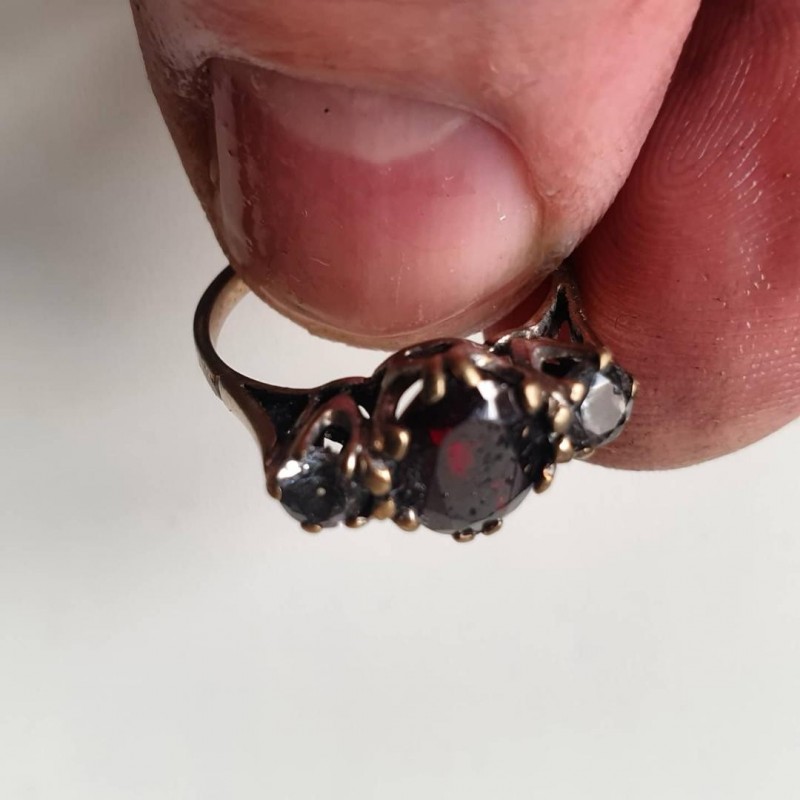
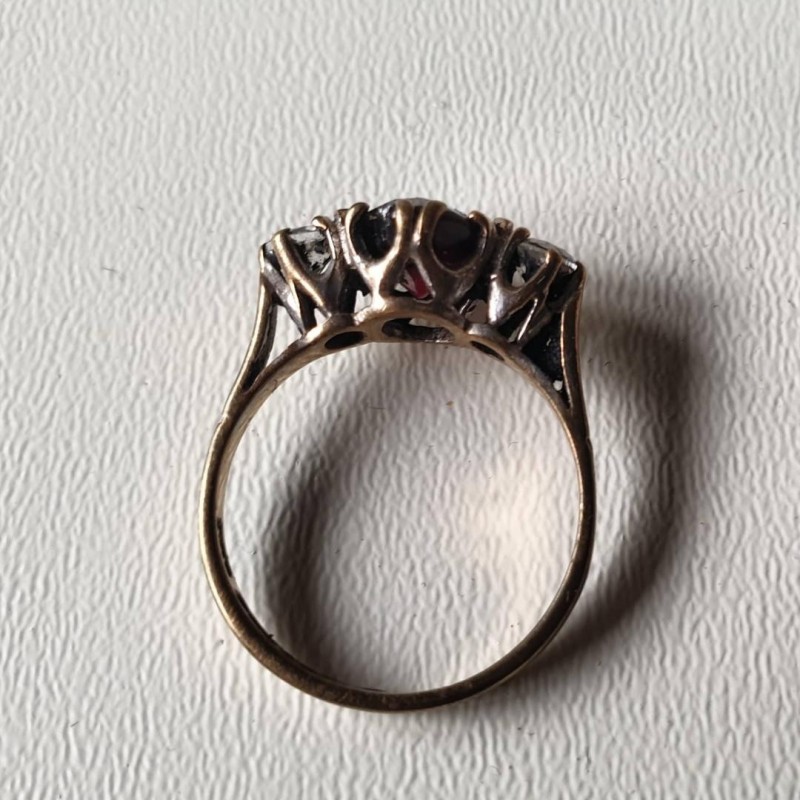
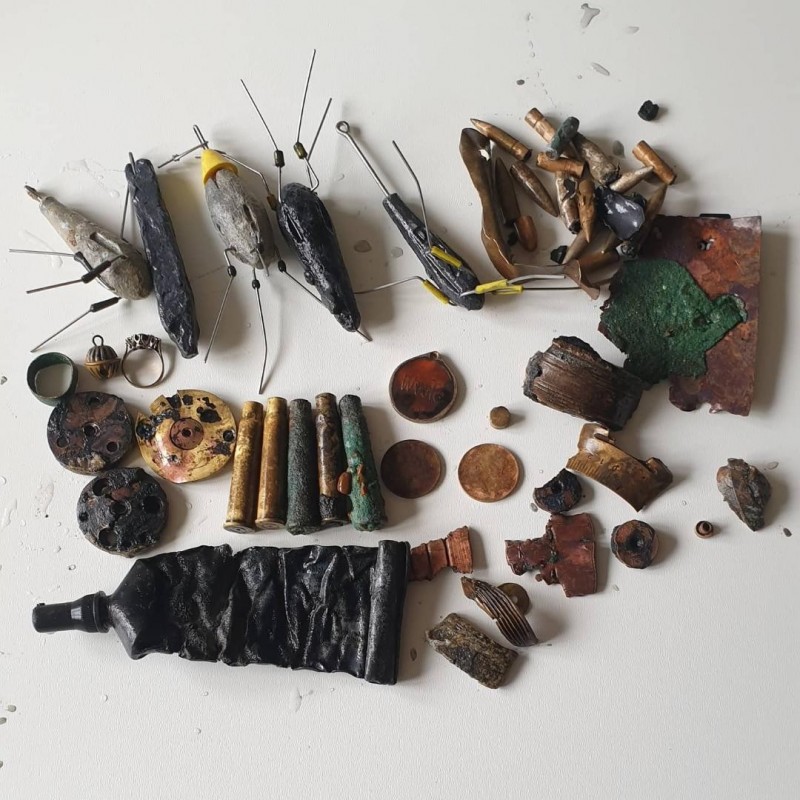
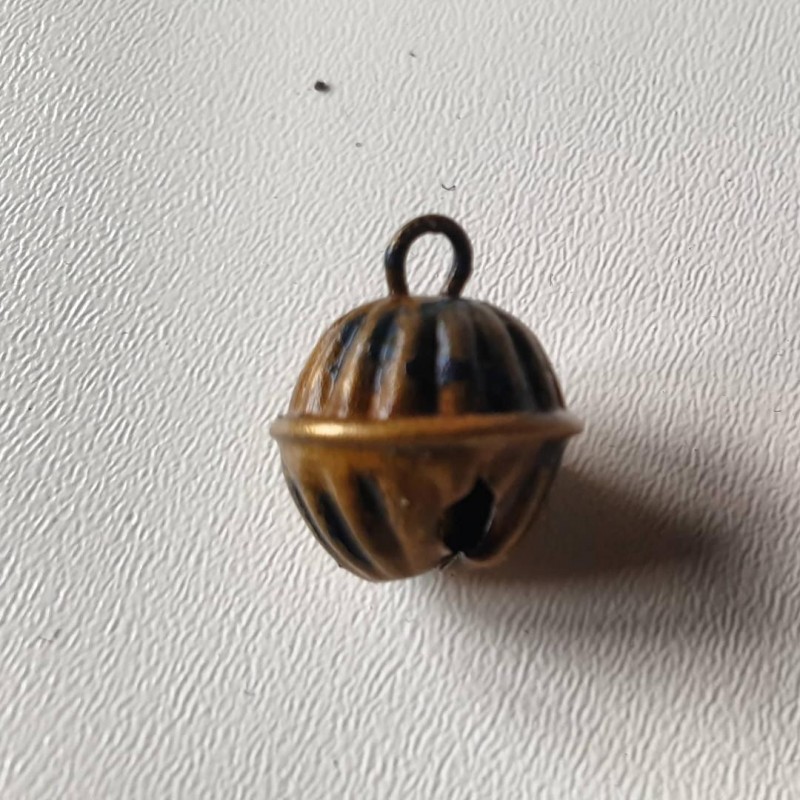
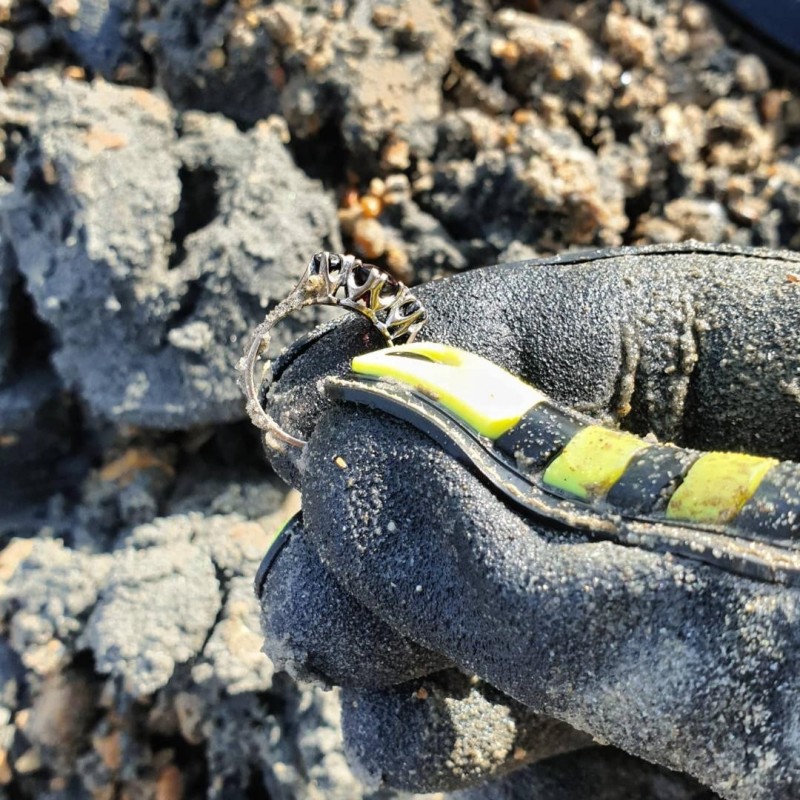
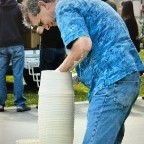
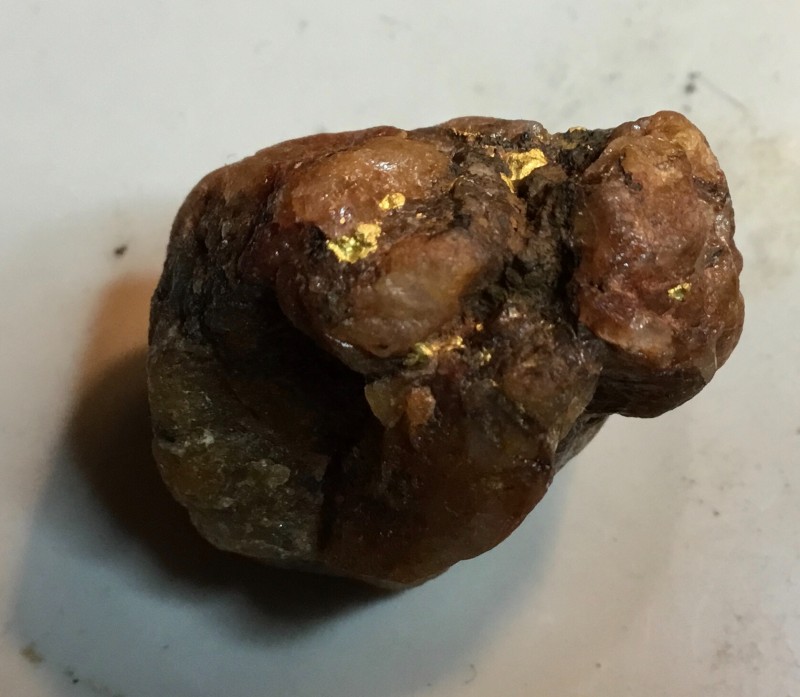

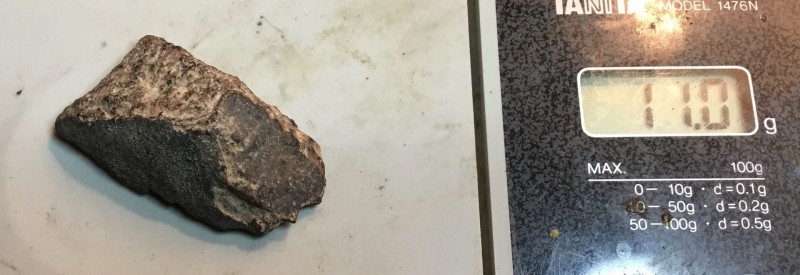

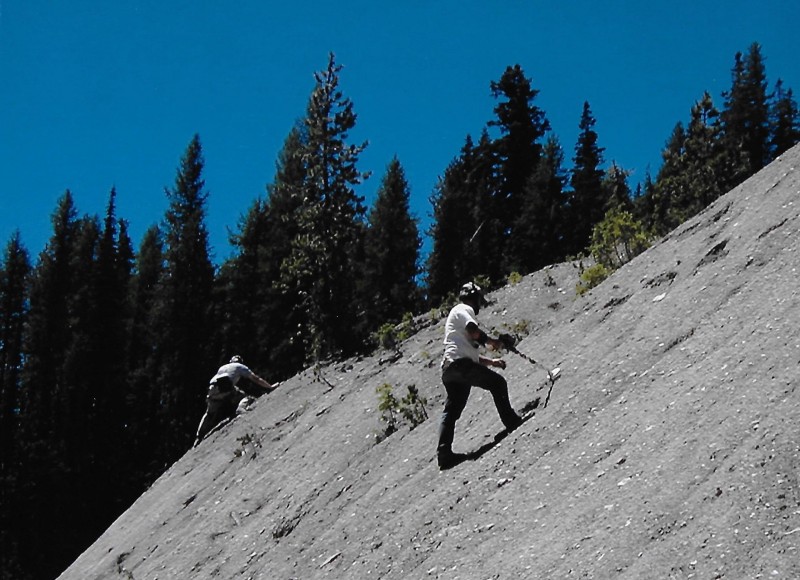
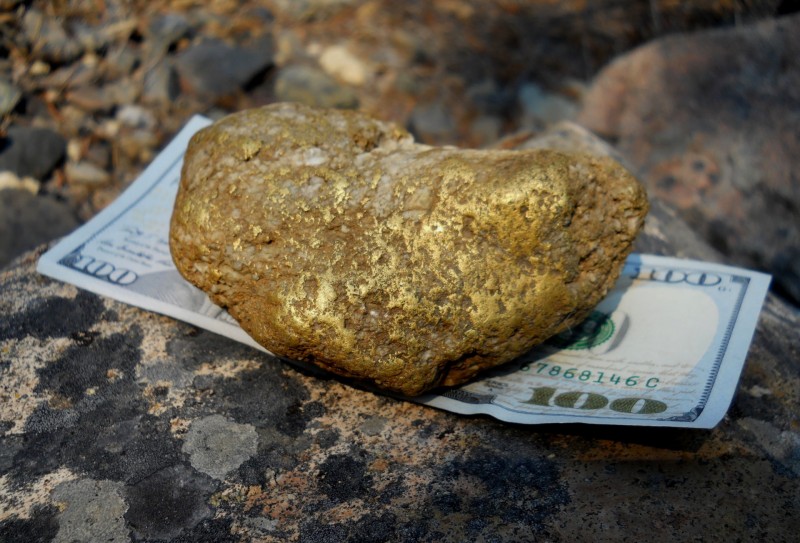
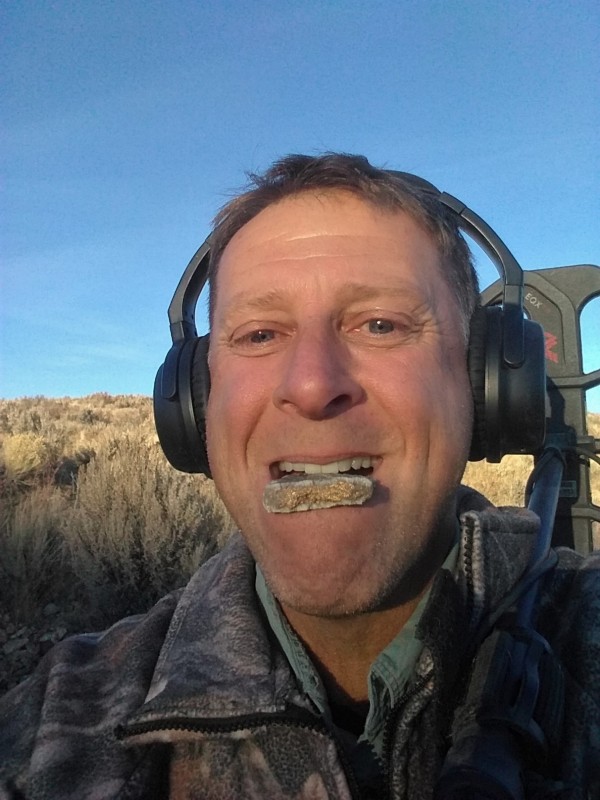
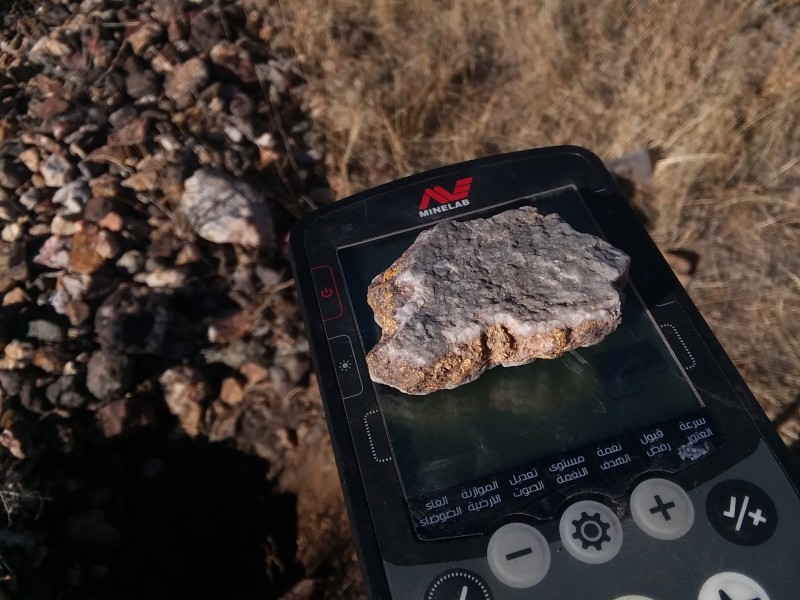
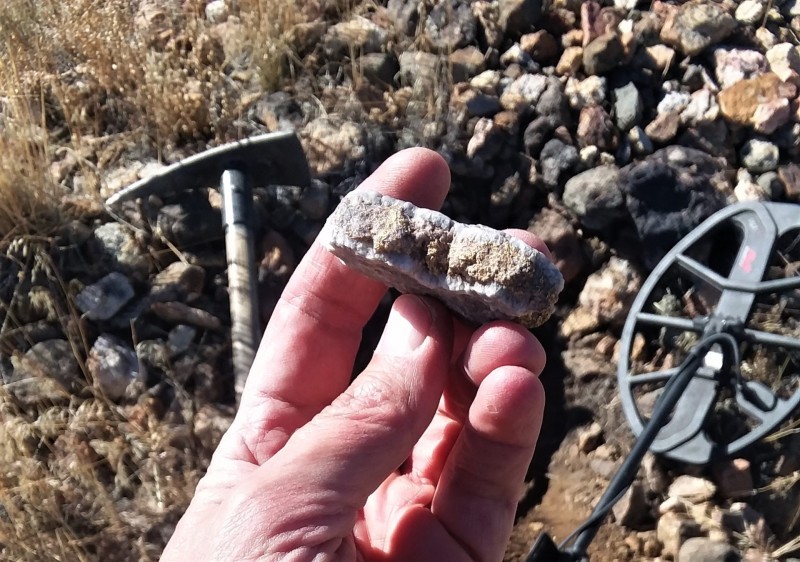
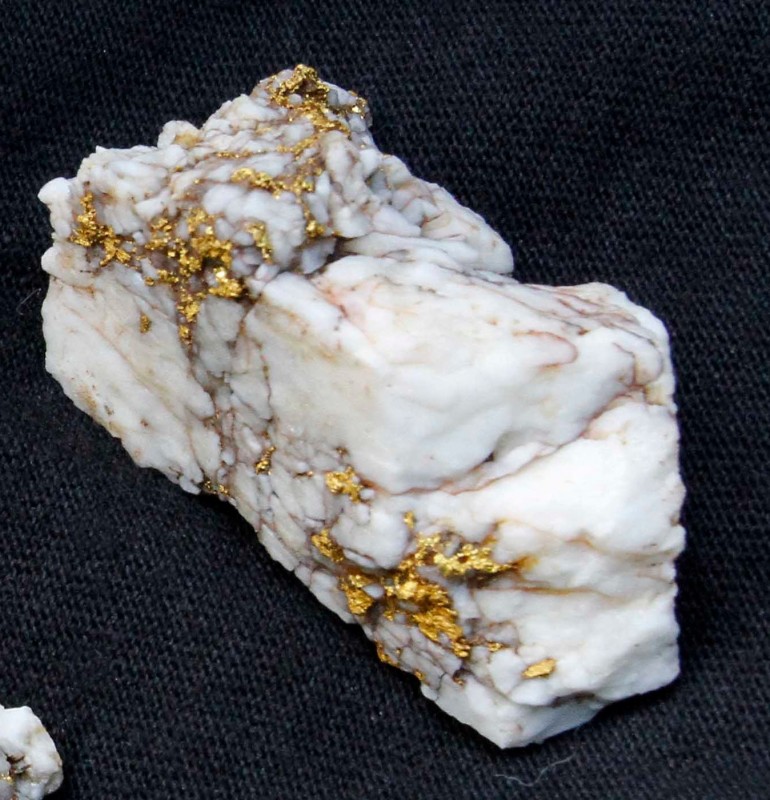
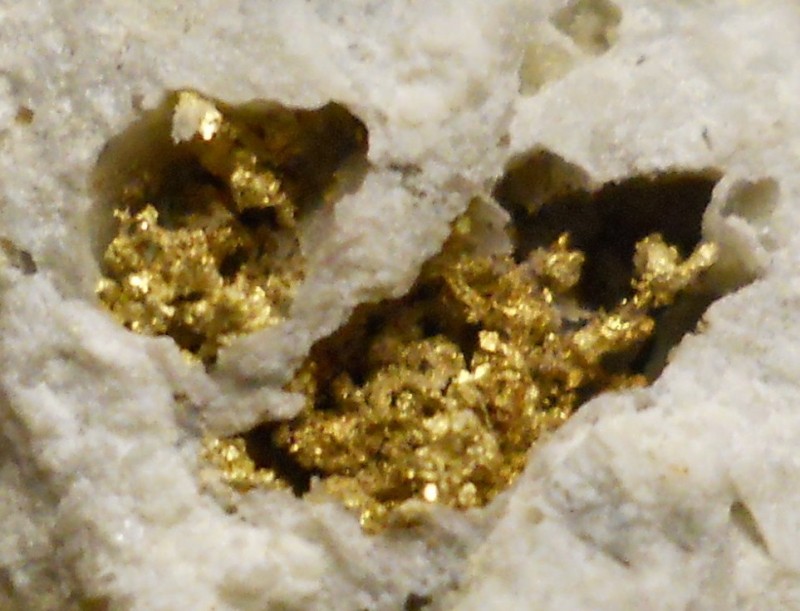
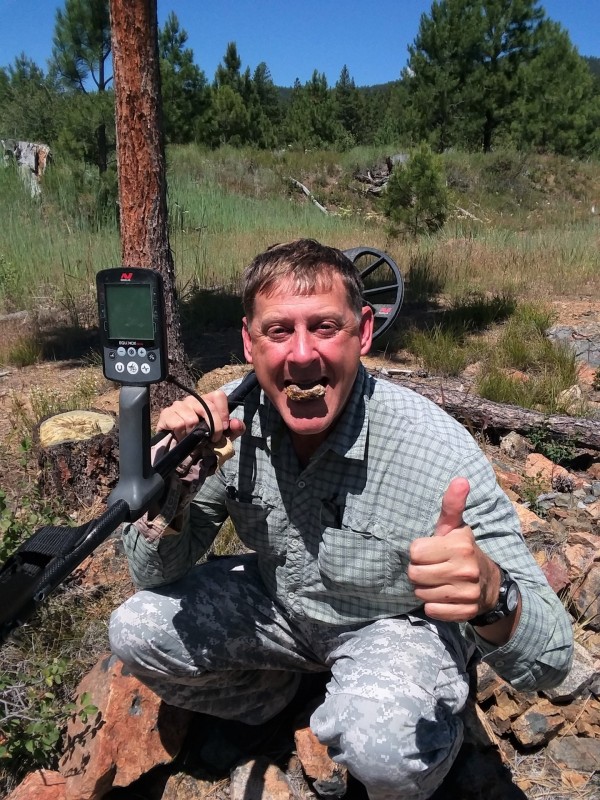
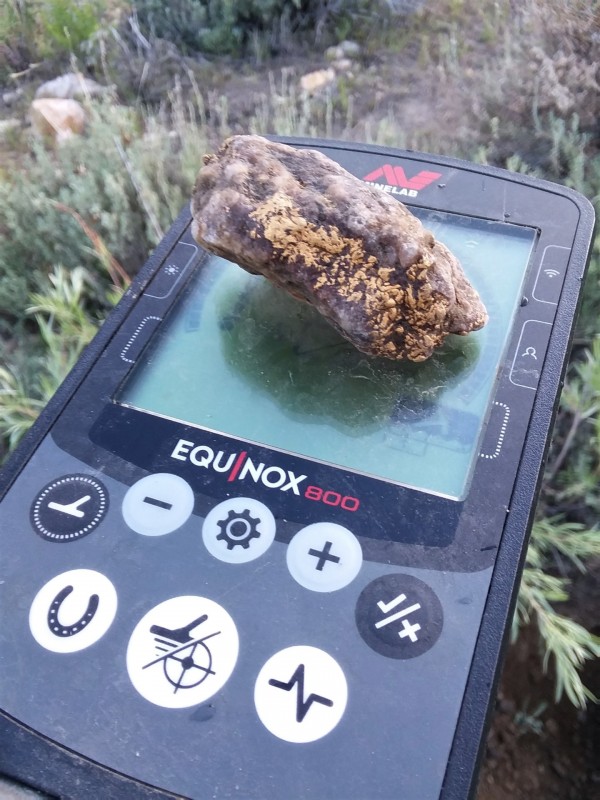
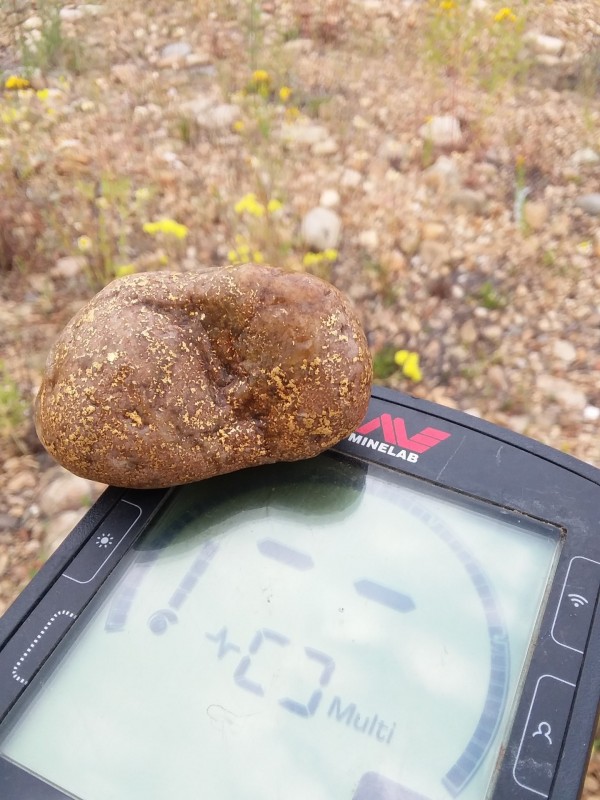
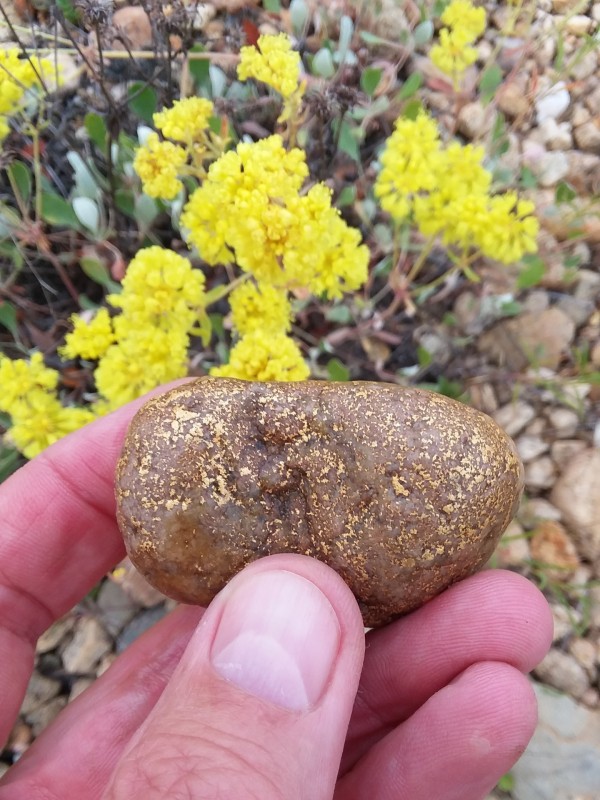
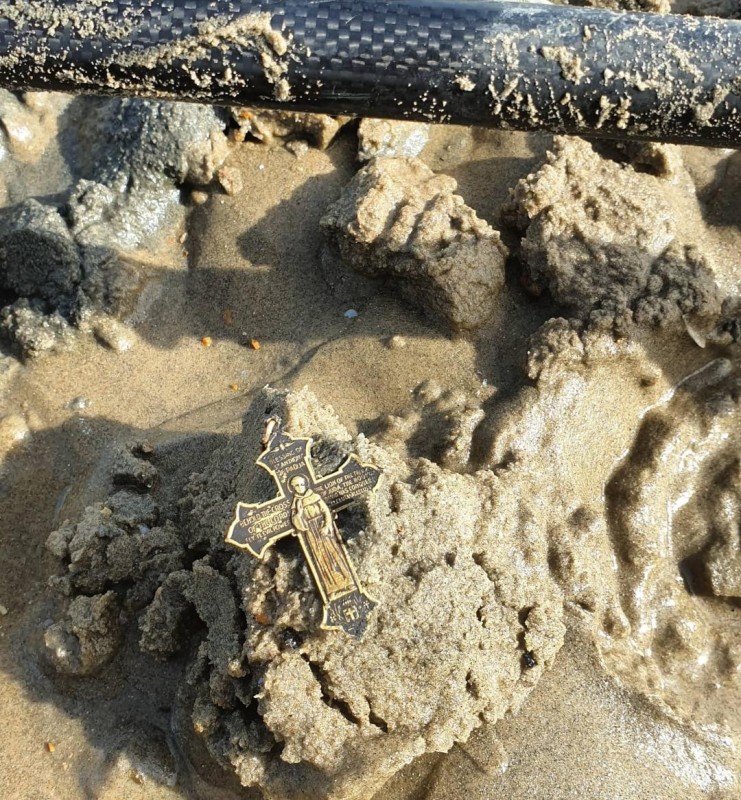
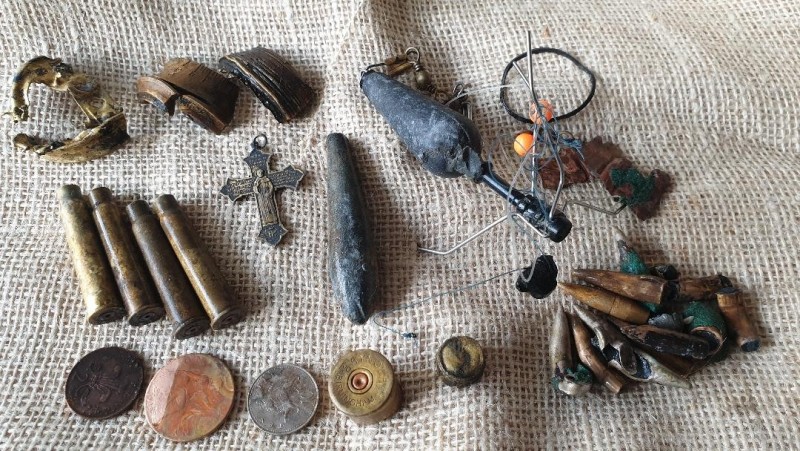
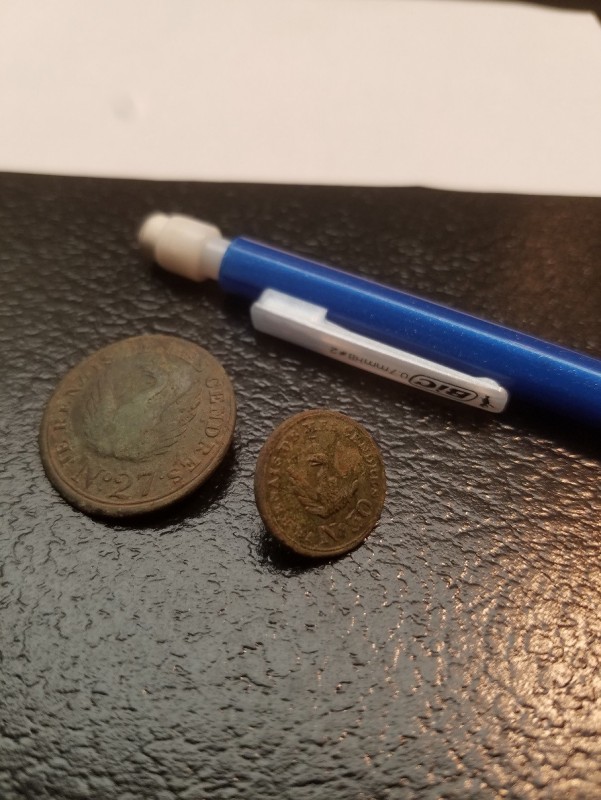
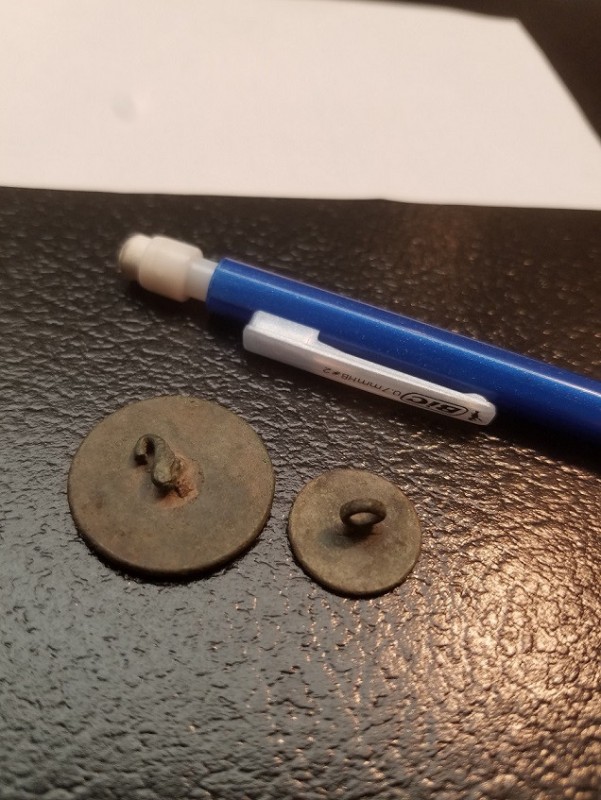
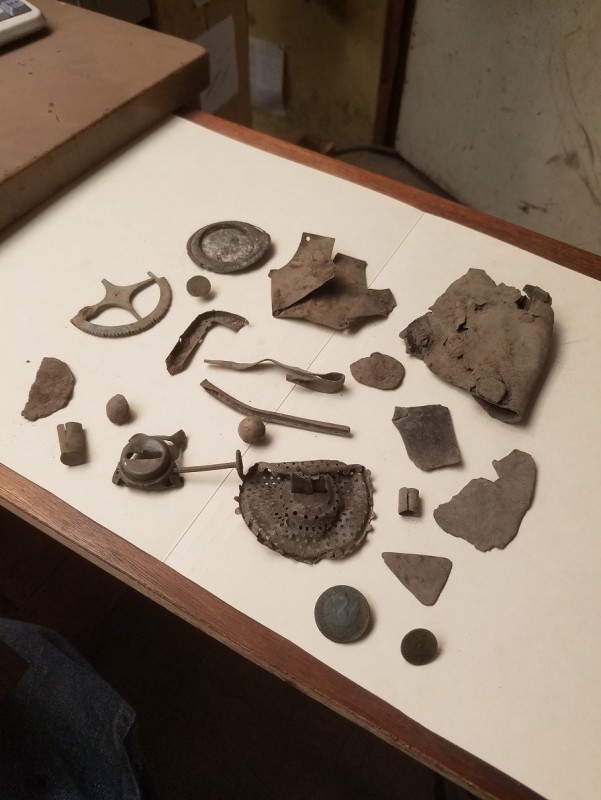
.thumb.jpg.77e4cb5bf39d44bdd2050d2edb7dfdb1.jpg)
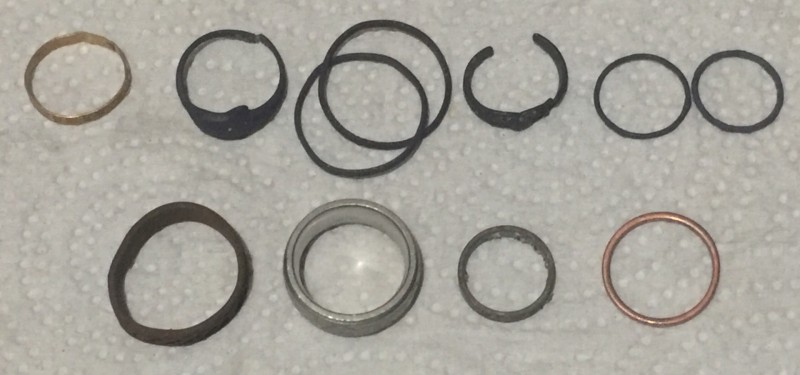
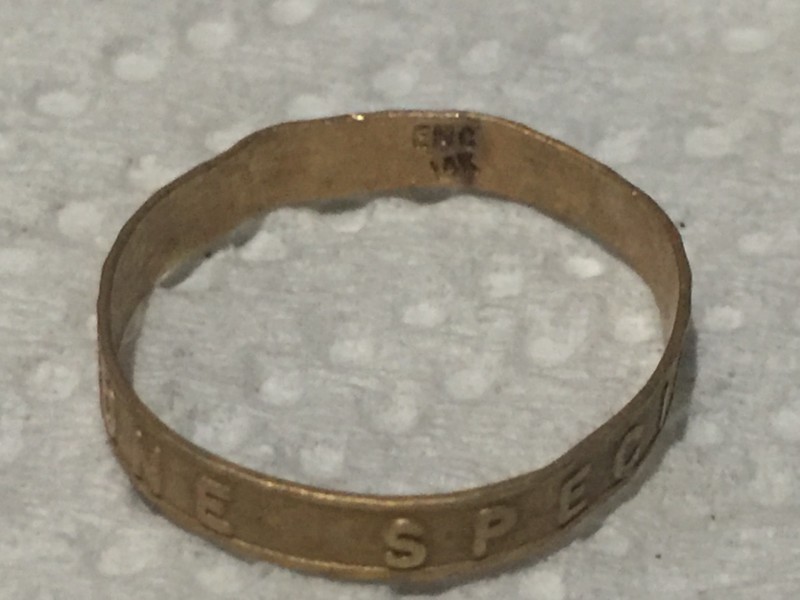
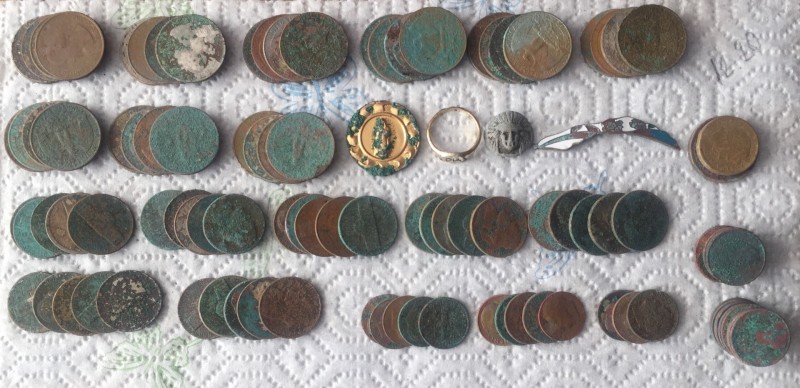
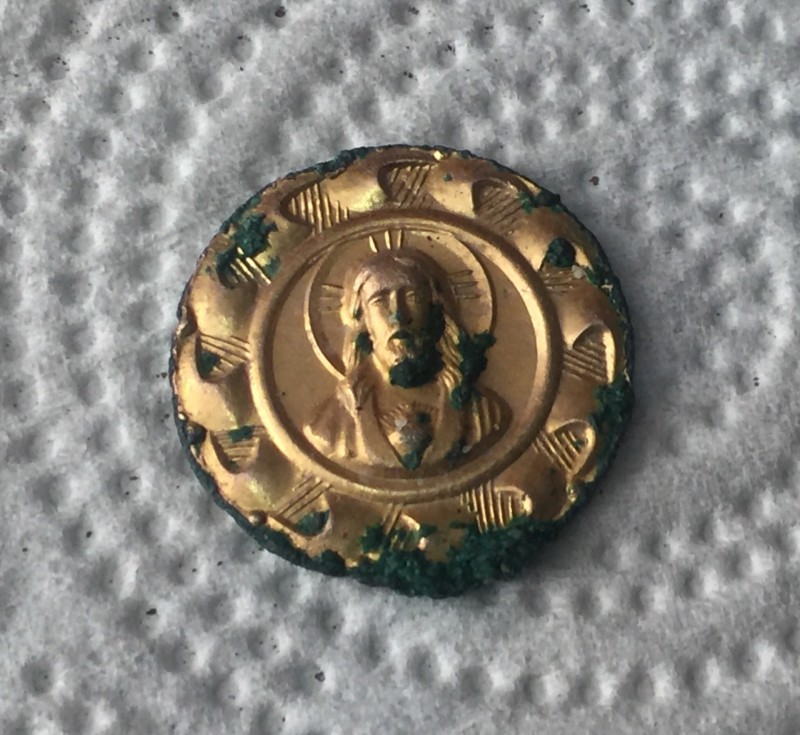
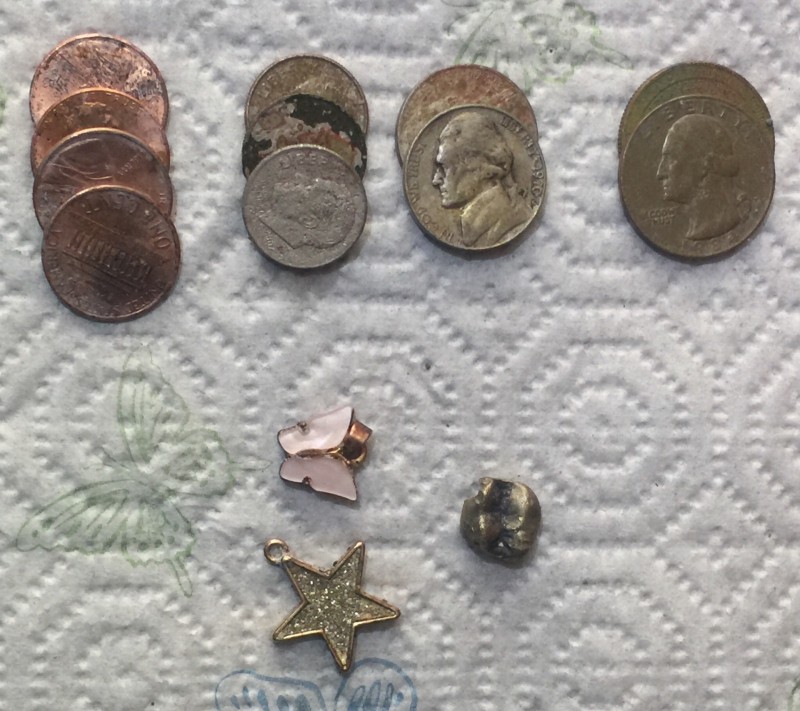
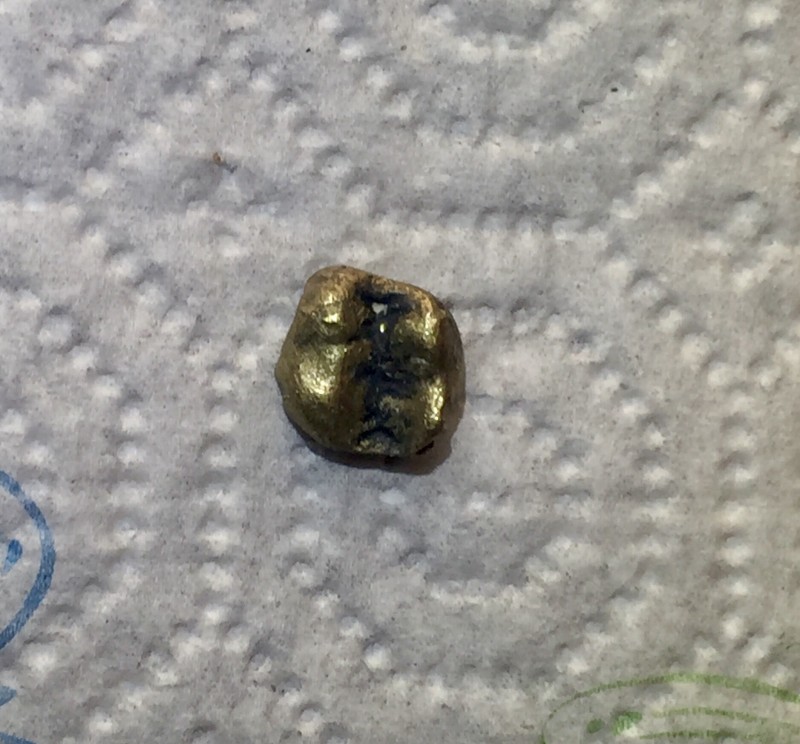
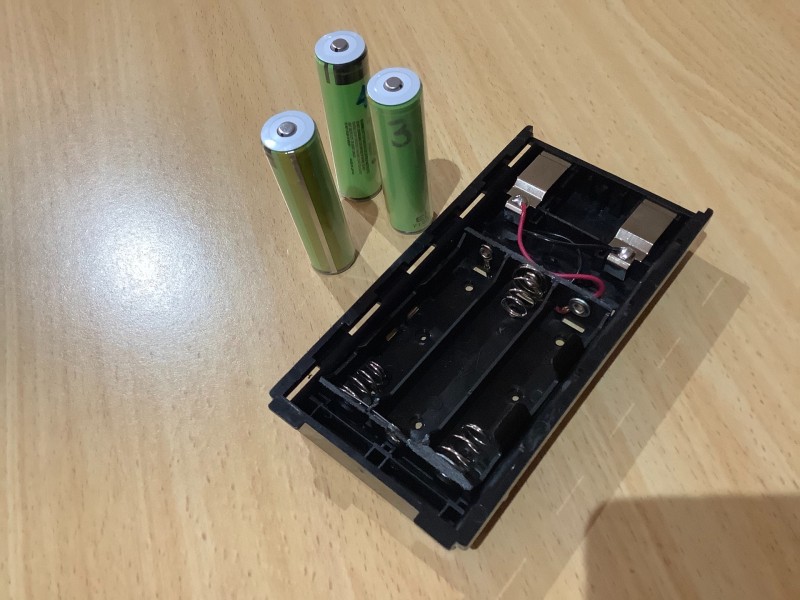
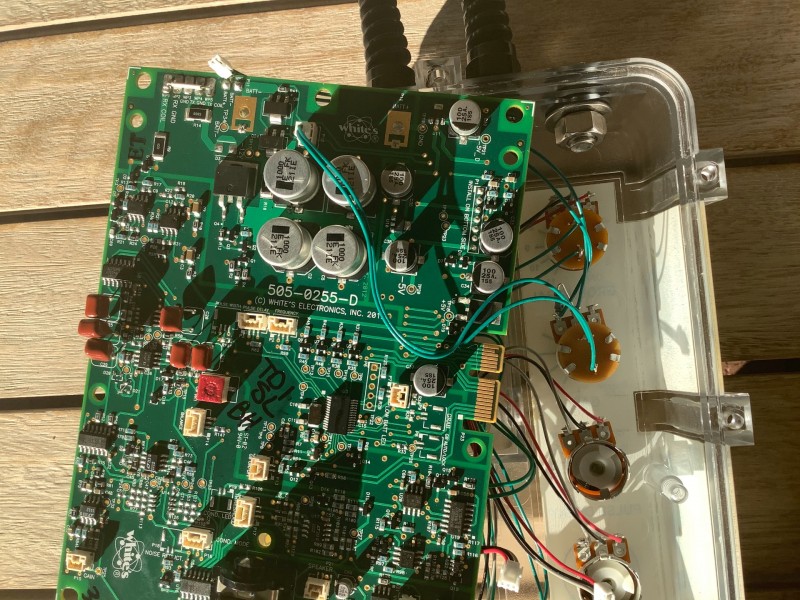
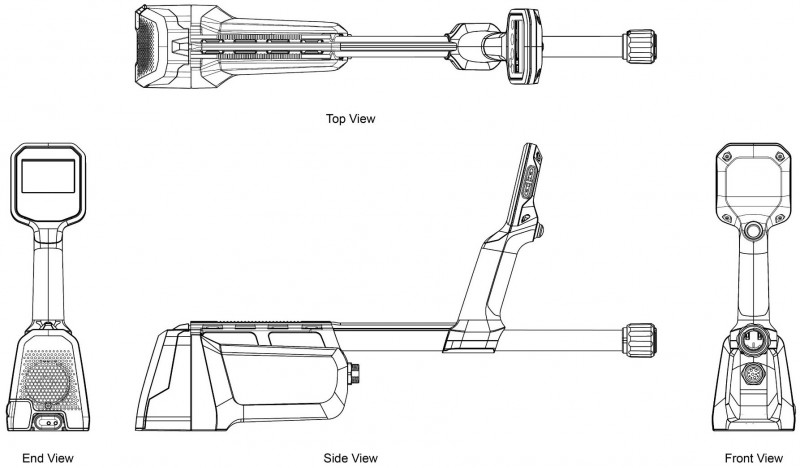

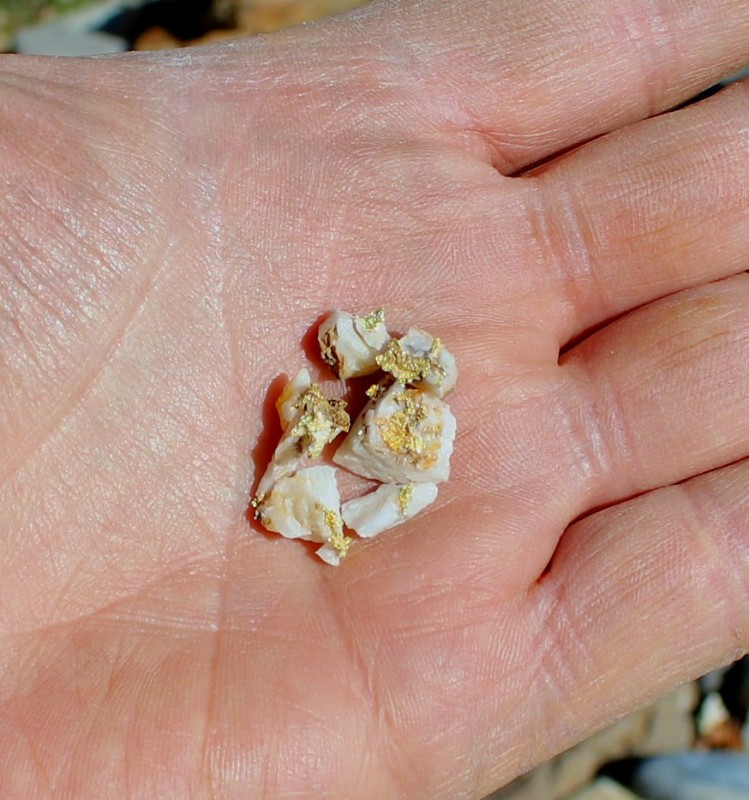

.thumb.jpg.45321b095f0e66d34ebb743e5a399ecb.jpg)
.thumb.jpg.3ab425f1f0ffc694bce628dbe36f26dc.jpg)

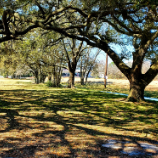
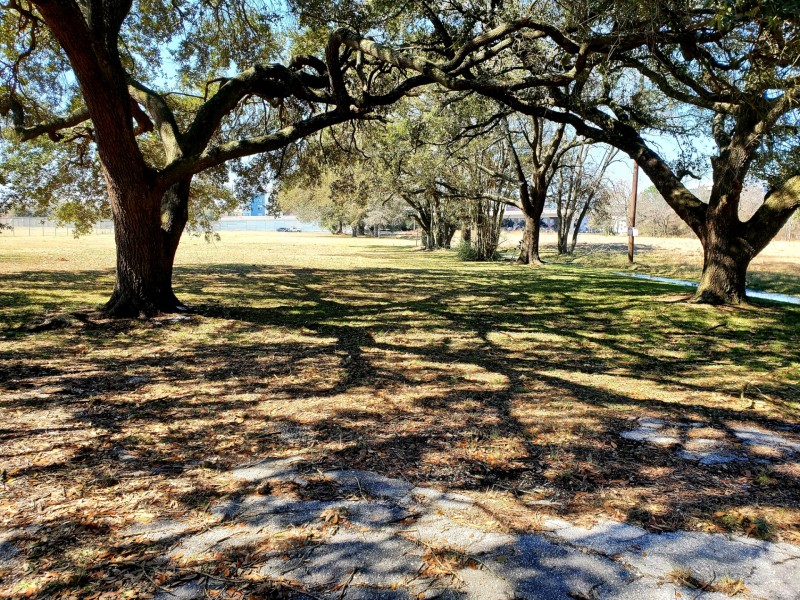
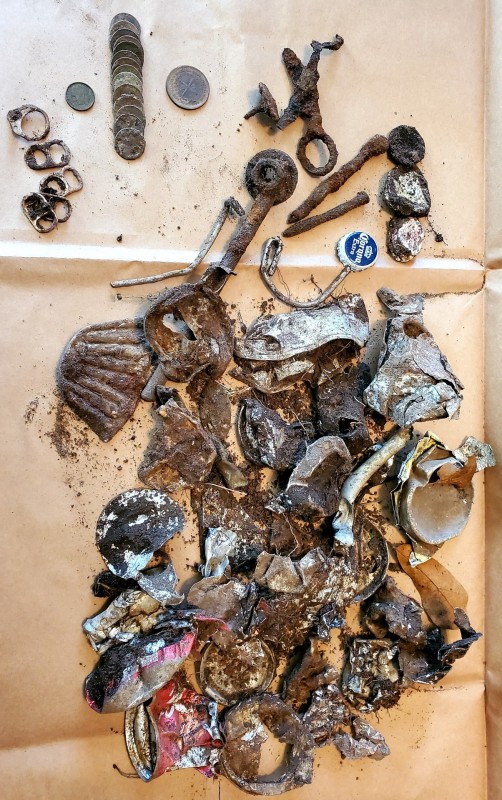



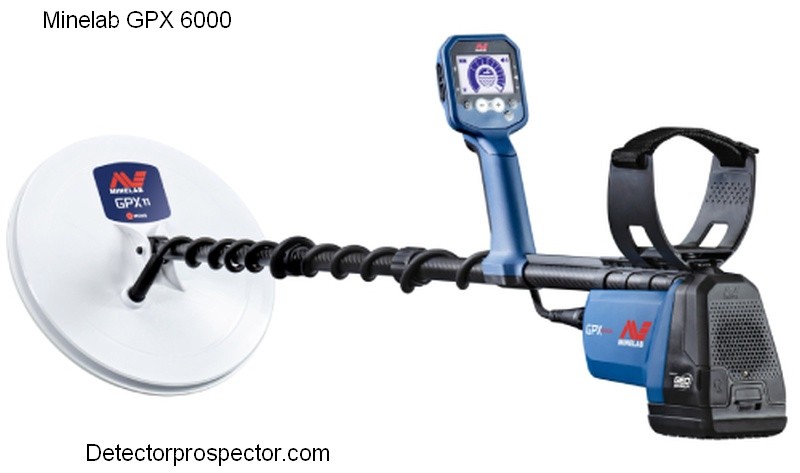
.thumb.jpg.72f16beb68a9e333b02877ff5f0e315d.jpg)
.thumb.jpg.fa39b46892fec43fd6ad45f283801b66.jpg)
.thumb.jpg.95344db3aeef0a4c6c73420daa366191.jpg)
